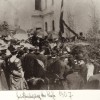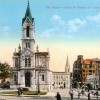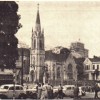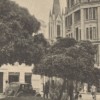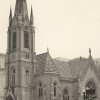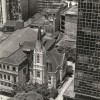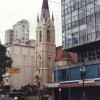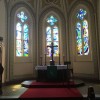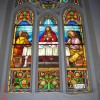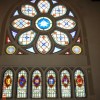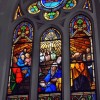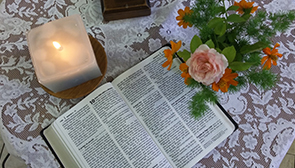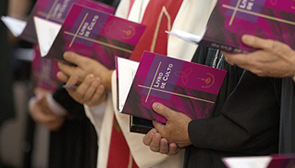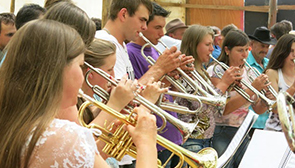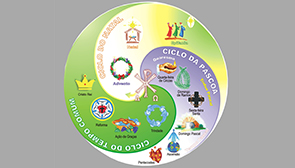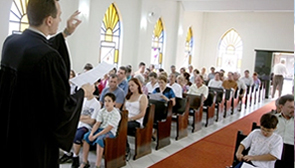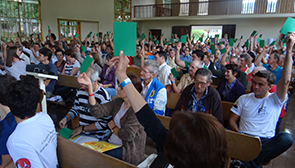On 1 May, the old police headquarters of the Federal Police in São Paulo, Brazil, burned down and collapsed. At least one person is believed to be dead and many are missing. The building, which belongs to the federal government, was a shelter for at least 146 families - or 372 people - in an occupation led by the social movement Luta por Moradia Digna, or “Struggle for Decent Housing.”
Debris from the fire hit three neighboring buildings, including São Paulo’s Lutheran Church, which had 90 percent of its structure destroyed. The church was classified as one of São Paulo’s historic and cultural heritage sites. Below, Rev. Rolf Schünemann reflects that the building, in fact, not only an historic site but a living ecumenical presence that touched the lives of thousands of people over more than 100 years.
“A bruised reed he will not break, and a faintly burning wick he will not quench; he will faithfully bring forth justice.” Isaiah 42:3
Dark smoke was rising high amid the wreckage of a collapsed building in the center of the city of São Paulo, Brazil, 1 May. Beside it, laid the centennial tower of the Martin Luther temple. The side wall of the church had completely collapsed. The temple is wounded and desolated in the middle of the largest metropolis of South America.
The temple gathered, during its almost 110 years, thousands of men, women, young people and children. In that temple, many people have found God. God passed into their lives and they could witness God’s presence.
In this space, they had a place for prayer, meditation, praise and worship. God was mixed in this distressing, tense and stressful daily life. They experienced God amid the contradictions and changes in the life of this city.
People found shelter, support, and fellowship. They have witnessed enormous transformations throughout these 110 years. From the beaten-up streets to the streetcars, from the asphalt to the subway; from the houses to monumental buildings; from the warehouses to the big markets; from workshops to large industrial complexes.
In other words, industrialization, metropolization, geographic expansion, population, density of peripheries, growth of slums, verticalization, pollution, revolutions, wars, attacks, strikes. In short, the city as the setting within which the economy, politics and culture with its changes, affected the people and also this church and its members.
How many tensions and emotions, afflictions and joys can be accounted for! How much shared crying and how much solidarity was experienced there!
The Christian community is always part of its time and space. It goes through the vicissitudes of history and is marked by its geographical context. Social contradictions are not indifferent to it. The evangelical Lutheran community in the center of São Paulo opened its doors to street people on a weekly basis. Every Friday the church space was open to communion and prayer. The everyday tragedy of street people was experienced with solidarity. The neighboring building, occupied by homeless people, was yet another sign of the social cry for help present in the Brazilian cities.
And behold, on 1 May the tragedies are mixed. The tragedy of the homeless with the tragedy of the community that was near them. The community runs against the current of indifference and prejudice. It is engaged in a monumental effort to overcome the divorce of faith and life. And more: what collapsed was also the painful and suffering work of more than a decade of restoration of a cultural patrimony of the city.
The story is always open for news. That is why this tragedy that plagues the evangelical Lutheran community does not represent the end of the more than centennial journey. God's promise not to forsake his people is still standing. The flame may be weakened, but it will not be erased. May the Holy Spirit of God grant discernment, wisdom, determination, and much strength to move forward!
Let us not forget that it was the main temple of the Lutherans in Sao Paulo - which generates the diversified and decentralized activity that we find today. It was the headquarters of the former Evangelical Synod of Central Brazil before the unification of the church in Brazil. It awakened innumerable lay people to the work of Gustavo Adolfo, of the Christian stewardship, of the evangelical academy, in the diaconia expressed in the work of the Ordem Auxiliadora de Senhoras Evangélicas, OASE (the IECLB network of women involved in diaconal work). It has propelled the suburban mission with the emergence and strengthening of the church in the east zone. It was a reference and agglutinative center for ecumenism. Leadership followed the dynamics of heritage along with the pastoral dynamics of countless pastors who dedicated their ministry in this city and in this church.
Publicado em WCC Pilgrimage Blog



